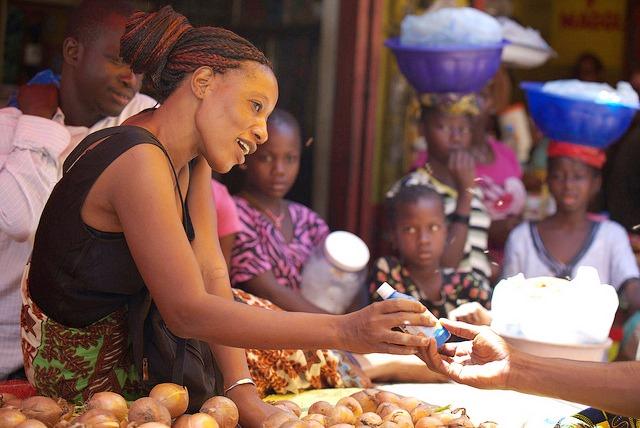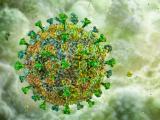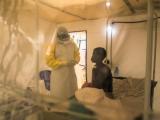The two countries still reporting Ebola infections saw a clear decline in cases last week, with illnesses reported from just a few hot spots and transmission chains, the World Health Organization (WHO) said today in its weekly epidemiologic profile of the outbreak.
Guinea and Sierra Leone reported only 18 cases last week, the outbreak's lowest weekly total so far this year. The drop in cases appears to signal a break in a month-long stall in progress that saw cases fluctuate between 30 and 37 lab-confirmed cases each week, the WHO said.
Outbreak deaths pass 11,000
Each of the two countries reported 9 cases, and the WHO said it's encouraging that Guinea and Sierra Leone both reported fewer than 10 cases, with the number of districts reporting cases last week the lowest in the outbreak region since May 2014. "But it is important to guard against complacency," the agency said.
The overall outbreak total is at 26,593 confirmed, probable, or suspected cases, with the fatality toll increasing to 11,005, according to the WHO.
For the third week in a row, no new healthcare worker infections were reported, keeping the total at 868 infections, including 507 deaths.
Country-specific patterns
After reporting cases in five districts the previous week, Guinea's nine newest cases were all in Forecariah district, an area near the Sierra Leone border that has been a hot spot in recent weeks. The WHO noted, though, that Forecariah is a large district and that Guinea's cases were widely dispersed through six subdistricts.
Sierra Leone's nine cases were in just two districts: Kambia, near the Guinea border, and Western Area Urban, which includes the capital city of Freetown. The country's cases are in two distinct geographical clusters, five of them in two Kambia district chiefdoms, one of which borders Guinea's Forecariah district. The other four cases were in the Moa Wharf area of Freetown.
Meanwhile, Liberia again reported no new lab-confirmed cases, and the outbreak will be considered over in that country if no new illnesses are reported by May 9. Last week the country's labs tested 317 new samples for Ebola.
Despite the drop in cases, the WHO said response markers still show some concerns. For example, 5 of 9 cases reported in Guinea were identified only after death in the community, a sign that illnesses were not reported and patients not isolated to curb the spread of the virus. Only 4 of the 9 cases were in known contacts.
In Sierra Leone, 3 of the 9 cases were identified only after patients died in community settings, and only 2 involved known contacts of previous cases, though illness investigations found epidemiologic links to previous cases.
Pockets of resistance
The United Nations Mission for Emergency Ebola Response (UNMEER) Community said in its most recent report that resistance and even sparks of violence still pose challenges in a few parts of Guinea and Sierra Leone
In a May 4 update, the agency said a response team that visited Sierra Leone's Kambia district to explore continuing Ebola transmission found that some communities don't appear to be receptive to Ebola messages. It added that clubs in some towns remain open, which is against emergency policies that are currently in place.
The team is retooling its social mobilization plan to make sure the right messages are conveyed and that they come from the district's influential people.
In Conakry, Guinea's capital, violent political demonstrations on May 4 again impeded the Ebola response, UNMEER said. Elsewhere in Guinea, a new push to find cases is slated to begin soon in the country's Forecariah district hot spots.
CDC downgrades travel alert for Liberia
In other developments, the US Centers for Disease Control and Prevention (CDC) recently revised its travel advice for the three Ebola-hit countries, with the main change a warning downgrade for Liberia in light of a steep and sustained drop in Ebola activity there over the past few months. Earlier in the outbreak the CDC had issued its highest level warning, advising travelers to avoid all nonessential travel.
In the May 4 updates, the CDC changed the advisory from Liberia from red to yellow, which urges travelers to practice enhanced precautions. It said that, as of Apr 18, all contacts of Liberia's last known patient have completed their 21-day monitoring period.
Though the risk of Ebola for travelers to Liberia is low, it's possible that the virus could be reintroduced to the country, the CDC said, adding that it and the Liberian government are closely monitoring the situation.
The agency urged people to avoid contact with blood and body fluids and said travelers should be aware that getting medical care in Liberia may be difficult, because the outbreak has severely strained the country's health system.
See also:
May 6 WHO Ebola situation report
May 4 UNMEER update
May 4 CDC travel alert page

















